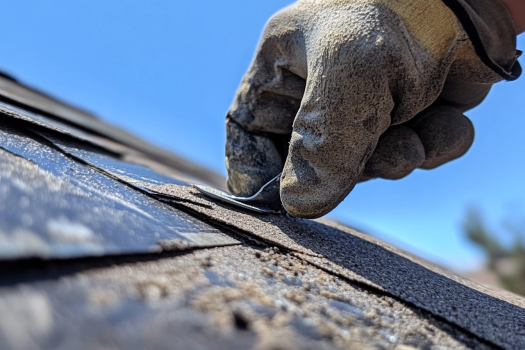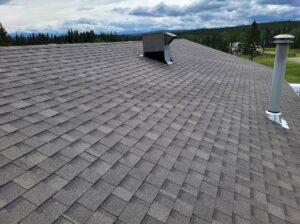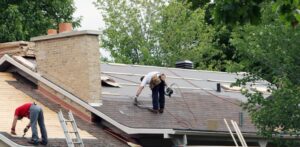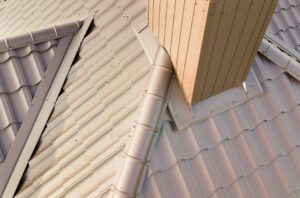Roof replacement is a major investment, and one of the first questions most property owners ask is: how long will a new roof last? The answer isn’t always straightforward. The lifespan of a roof depends on the materials used, the quality of the installation, the weather conditions it faces, and how well it’s maintained over the years.
At Mountaintop Roofing Inc., we help Calgary homeowners and commercial property owners make informed decisions that prioritize longevity and value. Knowing what to expect from your new roof—and how to extend its life—is key to getting the best return on your investment.
This blog covers the average life expectancy of various roofing materials, factors that influence longevity, and how to make your roof last as long as possible in Alberta’s challenging climate.
Roofing Lifespan by Material Type
Different roofing materials have different performance characteristics and expected lifespans. Below is a breakdown of the most common roofing types used in Calgary and across Canada.
Asphalt Shingles
Average lifespan: 15–30 years
Asphalt shingles are the most widely used roofing material in Calgary. They are affordable, relatively easy to install, and available in various styles. Architectural shingles (also known as laminated or dimensional shingles) last longer than traditional 3-tab shingles and offer better wind resistance.
Factors That Affect Lifespan:
- Quality of the shingle product
- Proper ventilation in the attic
- Resistance to hail and UV damage
For Alberta homes, investing in impact-resistant shingles is recommended due to the frequent hailstorms that occur during spring and summer.
Metal Roofing
Average lifespan: 40–70+ years
Metal roofing is quickly becoming a preferred choice in Calgary for its durability and resistance to extreme weather. Steel and aluminum panels stand up well to snow, wind, and hail. Plus, metal reflects solar heat, which helps reduce cooling costs during Calgary’s warm summer months.
Benefits:
- Low maintenance
- Excellent for shedding snow
- Fire and hail resistant
According to Natural Resources Canada, metal roofing systems are also considered energy-efficient and environmentally friendly, as they often contain recycled materials and are recyclable at the end of their lifespan.

Flat Roofing Systems (Commercial)
Average lifespan: 15–40 years
Flat roofs are commonly found on commercial properties. Lifespan depends largely on the material:
- Modified Bitumen: 15–20 years
- EPDM Rubber: 20–30 years
- TPO or PVC Membrane: 20–30+ years with proper installation
- Built-up Roofing (BUR): 20–40 years
These systems require regular inspections and maintenance to manage drainage and prevent membrane damage. Calgary’s freeze-thaw cycle can accelerate wear on low-slope roofs if water is allowed to pool.
Cedar Shake or Wood Shingles
Average lifespan: 25–40 years
Wood shake roofs offer a natural, rustic appearance and solid insulation. However, they require more maintenance to avoid issues like moss growth, rot, or insect damage. In Alberta’s dry climate, proper treatment and ventilation are essential to prevent premature aging.
Synthetic Roofing Materials
Average lifespan: 40–50 years
Some manufacturers offer synthetic slate or rubber shingles that mimic the appearance of wood or stone but come with improved durability and lower maintenance. These products are relatively new but are gaining popularity in upscale homes across Calgary.
What Impacts the Lifespan of a Roof?
Beyond materials, several other factors play a major role in determining how long your new roof will last.
Installation Quality
Even the most durable roofing system will fail early if it’s not installed correctly. Poor flashing, improper nail placement, or shortcuts on ventilation can all lead to premature failure. Always work with certified, experienced contractors who follow manufacturer specifications.
At Mountaintop Roofing Inc., we ensure every roof is installed with precision and care, and we stand behind our workmanship.
Weather Exposure
Calgary’s weather is no small factor. A roof here must handle:
- Chinooks: Sudden warm winds that melt snow quickly, leading to freeze-thaw stress
- Heavy snowfall and snow loads
- Hailstorms, often severe enough to cause insurance claims
- UV exposure due to high elevation and dry summers
Using roofing materials rated for extreme conditions and installing systems that promote proper drainage are key to longevity in this environment.
Ventilation and Insulation
Proper airflow in the attic helps prevent heat buildup in summer and ice dams in winter. Poor ventilation can cause moisture accumulation, leading to mold, rot, and deterioration of the roof deck and shingles.
This issue is highlighted in building performance studies by the National Research Council of Canada, which identifies attic ventilation as a key element in preventing long-term damage.
Maintenance Practices
Regular roof inspections and minor repairs extend the life of your roof significantly. Simple maintenance actions like clearing gutters, checking flashing, and replacing damaged shingles prevent small issues from becoming expensive problems.
Warning Signs That a Roof Is Nearing the End of Its Life
Even with great materials and good maintenance, every roof has a lifespan. It’s important to recognize signs that your system is nearing replacement:
- Curled or missing shingles
- Bald spots or granule loss
- Visible sagging or soft areas
- Leaks in the attic or water stains on ceilings
- Moss or algae buildup
- Cracked flashing or exposed fasteners
Metal roofs might show fading, corrosion, or seam separation as they age, while flat roofing systems often develop cracks, bubbles, or ponding.

How to Extend the Life of Your New Roof
If you’ve invested in a new roof—or plan to—there are several things you can do to ensure it reaches its full lifespan:
1. Schedule Regular Inspections
We recommend inspecting your roof at least once a year, ideally in spring or fall. After a hailstorm or major snowfall, inspections can help you catch problems early.
2. Keep Gutters Clean
Clogged gutters cause water to back up under shingles or along flashing, increasing the risk of rot and leaks. Clear debris regularly, especially in fall.
3. Trim Overhanging Branches
Trees close to your roof can drop debris, cause physical damage during storms, and give rodents access to the roofline.
4. Monitor Attic Conditions
Check insulation and ventilation in the attic regularly. Damp insulation or musty odors could indicate hidden roof issues.
5. Hire Reputable Roofing Contractors
The company you hire matters. A professional team will install the system to code, follow best practices, and help you maintain your roof over time.
Roofing Lifespan FAQ
How long does a new asphalt shingle roof last in Calgary?
With proper installation and maintenance, architectural asphalt shingles typically last 20–30 years. Impact-resistant shingles tend to perform better in hail-prone areas.
Is metal roofing worth the investment?
Yes—metal roofing lasts two to three times longer than asphalt and offers strong protection against hail, fire, and snow. It also reduces maintenance needs.
How often should I replace my commercial flat roof?
Most flat roofs last 20–30 years, depending on the material. Regular inspections and maintenance can extend that lifespan significantly.
What voids a roofing warranty?
Improper installation, lack of maintenance, or unauthorized repairs can void both material and labor warranties. Always follow the manufacturer’s care guidelines and keep records.
Start Your Roof Project with the Right Information
A new roof is more than a home upgrade—it’s a structural and financial commitment. Understanding how long your new roof will last helps you budget, plan maintenance, and feel confident in your investment.
At Mountaintop Roofing Inc., we help Calgary-area clients choose the right system for their building and climate. Whether you need asphalt shingles, metal roofing, or a flat commercial system, we’ll install it right and help you get the most out of it.
Get a free estimate now to start planning your roofing project with a team that puts durability and quality first.




